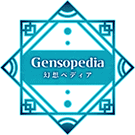Suikoden series: Difference between revisions
More actions
No edit summary |
No edit summary |
||
| Line 1: | Line 1: | ||
[[File:Marugoto! Gensosuikoden Book.png|300px|thumb|right|A selection of protagonists from the first 10 games in the series.]]'''Suikoden''' (幻想水滸伝, ''Gensōsuikoden'') is a series of role-playing games published by [[Konami]]. | [[File:Marugoto! Gensosuikoden Book.png|300px|thumb|right|A selection of protagonists from the first 10 games in the series.]]'''Suikoden''' (幻想水滸伝, ''Gensōsuikoden'') is a series of role-playing games published by [[Konami]]. | ||
Dating back to the Sony PlayStation, the game series is loosely based on the classical Chinese novel Shui Hu Zhuan, whose title is rendered as Suikoden (水滸伝) in Japanese. Each individual game in the series centers on relative themes of politics, corruption, revolution, mystical crests and the [[108 Stars]], the 108 protagonists who are loosely interpreted from the Shui Hu Zhuan. | |||
==Overview== | ==Overview== | ||
Revision as of 14:01, 5 November 2019
Suikoden (幻想水滸伝, Gensōsuikoden) is a series of role-playing games published by Konami.
Dating back to the Sony PlayStation, the game series is loosely based on the classical Chinese novel Shui Hu Zhuan, whose title is rendered as Suikoden (水滸伝) in Japanese. Each individual game in the series centers on relative themes of politics, corruption, revolution, mystical crests and the 108 Stars, the 108 protagonists who are loosely interpreted from the Shui Hu Zhuan.
Overview
The Suikoden series is a video game franchise published by Konami. It is a Japanese role-playing game series with varying gameplay, settings and stories between each installment, with a lineage of shared continuity running through many of the games.
Though the core series is a role-playing game franchise, it has branched into other genres, such as tactical role-playing games, visual novels, and card games. The series has been distributed on many platforms, beginning with the Sony PlayStation, and including consoles, computers, and mobile phones. The Suikoden series has also branched into other forms of media, particularly novels, manga, and audio dramas.
Gameplay
The Suikoden series usually puts the player in control of multiple characters in a party of between 4 and 6 characters depending on the game, though there are exceptions. The player will build the party's strength by gradually acquiring new abilities and equipment to handle more powerful opponents.
As a Japanese role-playing game, these games involve the use of in-game menus to select items, skills and upgrades.
Synopsis
Ten of the thirteen individual titles released in the Suikoden series take place in the same, unnamed, world. This world is a setting with two main forces at play.
One are runes, which are magical crests that characters may have equipped to give them magical powers or enhanced abilities. Greater than these even are the 27 True Runes, which are, according to series legend, said to have a key part in the creation of the world.
The other main influencing force is that of the 108 Stars. A much more nebulous and esoteric influence than even runes, the 108 Stars are frequently described as guardians, guides, or signposts for individual characters. Each "main" title in the Suikoden series involves a convergence of the 108 Stars.
Games in the Suikoden series tend to intertwine these two forces, as well as the temporal politics of the games events in order to examine notions of destiny, order, chaos, and the meaning of will.
Games since 2008 have taken place in different worlds of what is called the Infinity, a multiverse concept previously alluded to in other titles. These titles do not involve runes, but do include the 108 Stars and have their own, individual lore aspects.
History
Sony PlayStation
The Suikoden series first began with the release of Suikoden for the Sony PlayStation on December 15, 1995. It was developed by Konami Computer Entertainment Tokyo. Release early in the PlayStation's life cycle, it sold well due in part of a lack of competing RPGs on the new system.
The second game in the series, Suikoden II was released on December 17, 1998. The game met with great acclaim in Japan and overseas and spawned no less than three spin-off titles: Gensosuikoden Card Stories, based on the newly released trading card game, and visual novels Gensosuikogaiden Volume 1 and Gensosuikogaiden Volume 2.
Sony PlayStation 2
2002 saw the release of Suikoden III, the first 3D entry of the series. Although it sold and reviewed well, series producer Murayama Yoshitaka would leave the team at the end of development. Kawano Junko would replace him as lead for 2004's Suikoden IV as well as its 2005 spin-off, Suikoden Tactics.
Suikoden V was released in 2006 but despite positive reviews, failed to match previous sales numbers hit by Suikoden III and IV.
Mobile, Nintendo DS and Sony PSP
The series first portable title came in 2005, with the release of Gensosuikoden I&II, a compilation of the first two games, being released for the PSP.
In 2008, Suikoden Tierkreis was released for the Nintendo DS, abandoning the continuity built up by the previous games in favour of a new, independent setting. Prior to its release, Gensosuikoden Tierkreis Hoshikuzu no Shiro, a mobile phone visual novel intended as a prequel to the new title, was also released.
2012 saw the release of Gensosuikoden Tsumugareshi Hyakunen no Toki, set in a third separate continuity, on the Sony PSP, which produced average reviews and disappointing sales.
